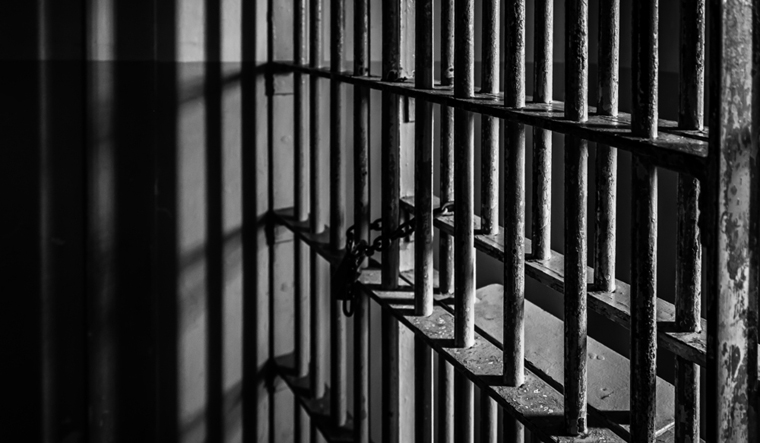The Supreme Court had issued alarm bells around mid-March itself on how prisons high-risk of transmission of the COVID-19 virus in prisons, could turn them into "fertile breeding grounds". It accordingly directed states to decongest their prisons. Maharashtra became the first state to follow through with a high-powered committee recommending on March 26 the release of under-trials and petty offenders facing up to seven years of punishment, numbering some 11,000 inmates in the category. But after some 185 coronavirus positive cases were discovered in Arthur Road Jail in the second week of May, the Maharashtra Prisons Department increased the number to 17,000 prisoners who could be released temporarily. This is almost half the prison population in Arthur Road Jail.
Prisons in Uttar Pradesh, Karnataka, Madhya Pradesh and Delhi have reported COVID-19 cases. According to data recorded in NCRB 2018, the total prison population in the country accounts for more than 4,66,000 prisoners with an overall occupancy level of 117.6 per cent. More than 77,000 undertrials have spent at least a year in jail without being held guilty by any court. Of them, more than 5,000 are those who are languishing in prisons for more than 5 years without being convicted.
These are numbers highlighted by Sanjeev P. Sahni, principal director of the Jindal Institute of Behavioural Sciences (JIBS) at the Jindal Global University in Sonipat. The institute, along with the International Society of Criminology (where Sahni is a member), is appealing for the release of under-trials and petty offenders to prevent overcrowding in Indian jails. But leaving prisoners to their own devices outside the jail complex is fraught with its own share of risks. Sahni talks to THE WEEK on how to effectively implement this temporary exit.
1. What is the state of diagnostic testing for coronavirus in Indian jails?
After the first case of COVID-19 positive in Arthur Jail, there has been a number of state prisons that have detected positive cases. The testing for coronavirus in India has been generally low and unfortunately perfunctory when compared to other developed countries. When it comes to testing for coronavirus in prisons, the situation is not any better. The officials are considering isolating the close contact and other symptomatic prisoners to separate buildings after the detection of the virus.
Considering the recent extensive spread of the virus across prisons, jail authorities have started medical screening of all inmates yet, rampant testing and thermal screening across all state prions is still a far-fetched dream. Where testing kits are scare across the country, it is highly unlikely to expect prisoners to be the government’s first priority. Such lapses in testing especially in India’s overcrowded and unhygienic prisons could lead to these becoming epicentre for the pandemic especially considering asymptomatic patients. It was also reported that only in Uttar Pradesh prison administration has begun random testing in the jails. As there is no official data regarding the cases in prisons, it is difficult to determine whether testing is being carried out uniformly across the country though reports indicate the contrary.
2. How much social distancing can be enacted in confined spaces like prisons even after the temporary release of undertrials and petty offenders? Are there enough supplies of masks, soaps, cleaning supplies, isolation wards, medical assistance and scanning of staff in Indian prisons at this point?
As stated in our appeal and as per NCRB 2018, Indian prisons have an overall capacity level of 117 per cent with more than 4,66,000 prisoners. With such huge numbers, overcrowding is a natural phenomenon faced in most of the prisons in the country especially when we have more than 61,000 prisoners above 50 years.
The recent increase in the number of positive cases of prisoners was through the transmission of the virus from one source of inmates to another. The recent Supreme Court guidelines have promoted the temporary release of prisoners to reduce overcrowding which would provide adequate space to implement social distancing than the current scenario offers.
Karnataka recently released 1,198 prisoners from various prisons across the state on bail or parole, though, the net change in the prison population has been only 659 inmates. This indicates that 539 people were newly admitted into these prisons during this time thus nullifying any decongestion in the prisons. This calls for other safeguards including scrupulously following the Model Prison Manual 2016, which entail proper hygiene and health measures for all inmates in prison.
Regarding the availability of masks, sanitizers and other supplies, a released inmate from a prison in Maharashtra told a news agency that they were not provided with adequate supplies of these. It is evident that Indian prisons are not well equipped with ample amount of mask and contactless hand wash provision, dedicated isolation wards, thermal scanning, and medical assistance in case of an exponential rise in cases. However, many states like Delhi and Kerala have employed the inmates in producing the above-required supplies.
3. The Delhi High Court came up with a new way for convicts to mark their attendance through WhatsApp video calls and Google Maps. How can technology aid decongesting and social distancing in Indian prisons?
The recent Delhi High Court judgement took cognizance of the medical condition of the rape convict and granted bail categorizing him as vulnerable in this health emergency. The precondition to bail is that he has to video call the investigating officer every Friday at a specified time and drop-a-pin on google maps for his location. This is a very progressive step considering the lockdown and to ensure restrictions.
Technology can help with the management of prisons especially in these times of social distancing. One major change that the prisoners still lodged in the prisons have gone through during this pandemic is that social visits from their loved ones have been completely restricted for obvious reasons. Having a complete disconnect with the outside world can damage the psychological well-being of the prisoners. To obviate this, some prisons have started arranging e-mulaqats, where the prisoner can connect with their loved ones through video conferencing. In times of such pandemic, technology contributes as an aid in every sector varying from courts, police, politicians etc. Even correctional and prison department could utilize various available technology in tracing and monitoring of released prisoners.
4. Many released prisoners are unable to adjust to the world outside; often they may not be accepted into their homes and other social settings. What measures are being taken to ensure the released prisoners are not at risk of infection, disease and hunger outside the jail?
The issue of rehabilitation and reintegration of released prisoners has always been a challenge as prisoners face stigma and secondary victimization over their past from various stakeholders of the society. There have been scant reports on the measures taken to ensure the well-being of the released prisoners as the ultimate survival of the individual is based on skills acquired in corrections or their past livelihood.
Considering this pandemic situation, the temporary release of prisoners would also instil fear of being ostracized and constrained economic means of their survival. There have been numerous cases of prisoners not being accepted by society after being released temporarily during the pandemic. One such case was highlighted in a report by BBC News, where they covered a story of how a man who had been released from prison in Mumbai was barred to enter his village as he came from a hotspot and the villagers were worried about his safety. These prisoners unfortunately now have been subjected to double stigma – being a prisoner and being a potential carrier of the virus.
5. Are there lessons that can be drawn from other countries in the management of prison populations in the time of COVID-19?
The United Nations Office of Drugs and Crimes, the World Health Organization, and the Office of the United Nations High Commissioner for Human Rights have passed a joint statement on safeguards towards COVID-19 in prison and closed settings. Many South Asian countries have released prisoners on parole, temporary suspension of sentence and remission including Afghanistan which has released more than 10,000 prisoners with special focus on women, children, and the elderly who may be under an enhanced risk of the virus.
India also needs to focus on vulnerable categories in prisons especially the elderly, pregnant women and person with comorbidities. Prisons in Dubai are excessively using virtual visits and virtual courtrooms to help their inmates. Some states in India have already begun e-mulaqats, and it is important for other states to also follow suit, keeping in mind the mental health of the prisoners.




